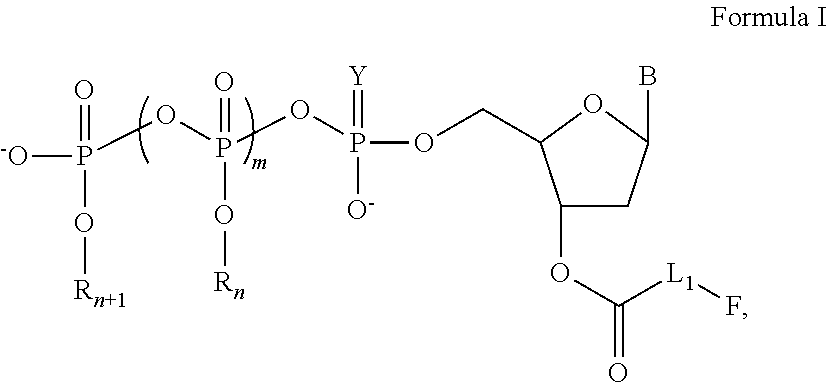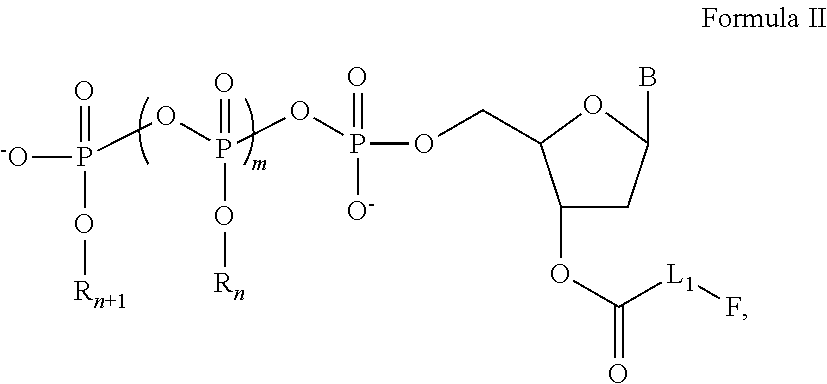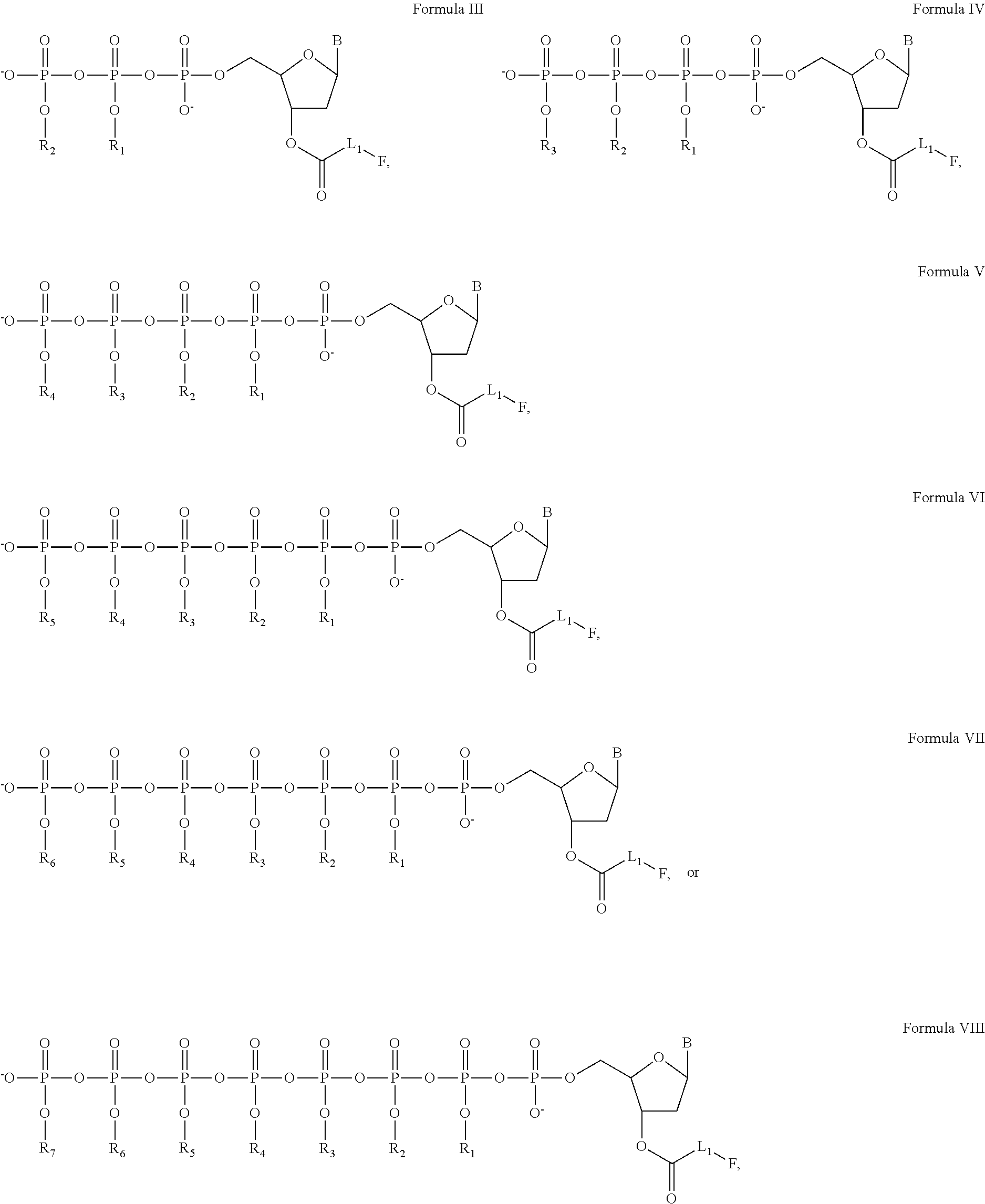Method for Real-Time Single Molecule Sequencing
- Summary
- Abstract
- Description
- Claims
- Application Information
AI Technical Summary
Benefits of technology
Problems solved by technology
Method used
Image
Examples
example 1
[0060]In this and the following examples, exemplary nucleotide analogs may comprise bases B, and / or groups Linker, Fluorophore, Y, R1, R2, . . . and Rn+1, each having an identity as described herein for nucleotide analogs having a structure of Formula I, supra.
[0061]A line of exemplary nucleotide triphosphate analogs have structure as shown in the following:
Wherein:
[0062]R1, R2, R3, R4, R5, R6, and R7 are each independently chosen from a hydrogen (H) or a fluorescence quencher, with or without a linker L2;[0063]F is a fluorescent dye;[0064]B is a base, which is chosen from adenine, cytosine, guanine, thymine, uracil, hypoxanthine, or 5-methylcytosine;[0065]L1 and L2 are linkers, which can be independently chosen from alkyl, alkenyl, alkynyl, aryl, heteroaryl, heterocyclyl, polyethylene glycol, ester, amino, sulfonyl, or a combination of some of groups mentioned above.
[0066]A schematic illustration of a single cycle of proofreading-dependent sequencing by synthesis using a binucleoti...
example 2
[0067]An exemplary triphosphate analog comprising a fluorescence quenching moiety Q has a structure of Formula IX:
[0068]Wherein,[0069]Q is a fluorescence quenching moiety;[0070]B is a base, which is chosen from adenine, cytosine, guanine, thymine, uracil, hypoxanthine, or 5-methylcytosine;[0071]F is a fluorescent dye; and[0072]L1 and L2 are linkers, which can be alkyl, alkenyl, alkynyl, aryl, heteroaryl, heterocyclyl, polyethylene glycol, ester, amino, sulfonyl, or a combination of them.
[0073]An additional quencher (Q) is added to lower the general background due the appearances of those intact nucleotide-attached fluorescent dyes when they show up in the signal-detectable volume in the reaction space.
example 3
[0074]An exemplary triphosphate analog with a phosphorothioate in place of the alpha-phosphate of the triphosphate chain, thereby preventing processive 3′ to 5′ exonuclease activity of polymerase, has a structure as shown in Formula X:
[0075]Wherein,[0076]Q is a fluorescence quenching moiety;[0077]B is a base, which is chosen from adenine, cytosine, guanine, thymine, uracil, hypoxanthine, or 5-methylcytosine;[0078]F is a fluorescent dye; and[0079]L1 and L2 are linkers, which can be alkyl, alkenyl, alkynyl, aryl, heteroaryl, heterocyclyl, polyethylene glycol, ester, amino, sulfonyl, or a combination of them.
PUM
| Property | Measurement | Unit |
|---|---|---|
| Length | aaaaa | aaaaa |
Abstract
Description
Claims
Application Information
 Login to View More
Login to View More - Generate Ideas
- Intellectual Property
- Life Sciences
- Materials
- Tech Scout
- Unparalleled Data Quality
- Higher Quality Content
- 60% Fewer Hallucinations
Browse by: Latest US Patents, China's latest patents, Technical Efficacy Thesaurus, Application Domain, Technology Topic, Popular Technical Reports.
© 2025 PatSnap. All rights reserved.Legal|Privacy policy|Modern Slavery Act Transparency Statement|Sitemap|About US| Contact US: help@patsnap.com



